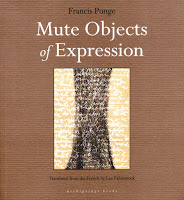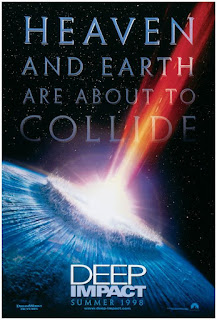The news from Palomar Observatory is that, yes, the days are
now getting shorter again. Should we be sad?
For the last week I've been able to see a pink sky when going to bed and another pink sky the following morning before getting up. That's kind of cool.
For the last week I've been able to see a pink sky when going to bed and another pink sky the following morning before getting up. That's kind of cool.
Nowadays our "midsummer" festivities seldom go
beyond some grilling on the deck with friends, an overnight to a nearby state
park, and a bike ride or two. This year Hilary
and I set up camp and walked the trails at Lake Carlos State Park, two hours
northwest of the Cities, then unfolded our chairs on the park's deserted beach
to watch the tree swallows jive and dart above the water in the waning light.
While we were sitting there we spotted a group of women doing "cobra" and
"downward-facing dog" on paddleboards out in the middle of the lake.
When not out scouring the countryside (or inside doing
"real" work) I have also been doing some reading along these
mid-summer lines, and I've come to the conclusion that Nature isn't that easy
to write about convincingly. That is to say, reading about plants, animals,
landscapes, and natural processes seldom generates the same kind of affection
for one's surroundings that being out in them does. Maybe this is because Nature
doesn't have a plot. It reaches us as a long succession of amuse-bouches, with a very pleasant soundtrack humming quietly in
the background.
Then again, many nature-writers aren't really interested in
conjuring Nature's allure. They're drawn to the intricate tidbits of
information that help us to "understand" rather than appreciate the
natural world. For example, I took a look recently at On Growth and Form, a classic piece of science written by D'Arcy
Wentworth Thompson and published in 1942. It's clear from the onset that D'Arcy
has profound appreciation for the beauty of natural forms. However, he is less
interested in describing these forms in words than in coming up with
mathematical formulas that somehow 'capture" them.
He describes the zoologist of his day as "deeply
reluctant to compare the living with the ideal, or to explain by geometry or by
mechanics the things which have their part in the mystery of life."
D'Arcy expresses a degree of sympathy for this approach,
which is, after all, spurred by
curiosity and appreciation, and he admits that the results of such lines of
thoughts can have interest.
"[The zoologist] has the help
of many fascinating theories within the bounds of his own science, which, though
a little lacking in precision, serve the purpose of ordering his thoughts and
of suggesting new objects of inquiry. His art of classification becomes an
endless search after the blood-relationships of things living and the pedigrees
of things dead and gone. The facts of embryology record for him ... not only
the life-history of the individual but the ancient annals of its race. The
facts of geographical distribution or even of the migration of birds lead on
and on to speculations regarding lost continents, sunken islands, or bridges
across ancient seas. Every nesting bird, every ant-hill or spider’s web,
displays its psychological problems of instinct or intelligence. Above all, in
things both great and small, the naturalist is rightfully impressed and finally
engrossed by the peculiar beauty which is manifested in apparent fitness or
“adaptation"— the flower for the bee, the berry for the bird."
But in the end, D'Arcy rejects
this approach, which, as he remarks at one point, "deals with ephemeral
and accidental, not eternal nor universal things."
At that point, I reject D'Arcy. In
the first place, how could any thinker equate eternal and universal things with
statistical analysis? D'Arcy is infatuated with Fibonacci numbers and considers
it worthwhile—one example among many—to reproduce a chart of "mean
apparent length of one-year-old herring, as deduced by scale-reading from
herring of various ages or 'year-classes.' "
"The whole subject is very
difficult, " he writes, "as we might well expect it to be, and I am
only concerned to show some small part of its difficulty."
Difficult? Perhaps. Interesting? Not in the slightest. The eternal and universal can be perceived far more easily and clearly in a single tendril of a pale green vine reaching out to wrap itself around the branch of a nearby shrub. It's path doesn't follow an arc or a spiral; it's much more elegant than that.
Nowadays the authors of works of
natural history and popular science make less of an effort to approach the
phenomena of Nature with slide-rule in hand. I dipped into The Genius of Birds by Jennifer Ackerman and was delighted by the
concatenation of recently discovered facts about bird behavior she has gathered
together. On the other hand, I'm not fond of the "scientists have shown
that" terminology that invariably accompanies these reports. After all, no
one who watches birds, even just out in the back yard, has ever considered them
"dumb." And I'm afraid that too much specific information about
neurons, genetics, vocal chords, and flight patterns might undercut the charm
that these creatures so often possess.
I prefer a more poetic approach.
Here the challenge lies in somehow avoiding generalities and making a few
details stand for a larger whole. I brought a thick book of Antonio Machado's
poems out on the deck a few nights ago. It was the perfect book for the evening
... bordering on the soporific. For example:
... the wind blows in squalls,
and between clouds and clouds
are patches of indigo sky.
Water and sun. The rainbow gleams.
In a remote cloud
zigzags
a thread of yellow lightning.
The rain batters the window
and the panes chime.
In the midst of the haze
shaped by the fine drizzle,
a green meadow emerges
and an oak forest blurs
and a mountain ridge is lost...
Though nothing is very specific, this sounds very much like
experience to me. But having read one page, I'm likely to sit back and stare
off into space with an inaudible but satisfied "hmmm" on my lips.
Let me assure you, I had no intention of systematically surveying a variety of approaches to
writing about nature. Maybe it was just that after a few pleasant hours outside,
I naturally selected a book off the shelf, time and again, that would preserve
the mood of semi-detached reverie rather than suck me into that vortex of
conflicting emotions that drive so many works of fiction.
Whatever the case may be, the other day I took a look at Mute Objects of Expression (1974) by the
French poet Francis Ponge. In the introductory pages of this squarish paperback
Ponge espouses a radical devotion to the think he chooses to describe, eschewing
the limpid turns of poetic phrasing that might naturally come to mind.
From now on, [he writes] may nothing ever cause me to go back on my resolve: never sacrifice the object of my study in order to enhance some verbal turn discovered on the subject, nor piece together any such discoveries in a poem.
Always go back to the object itself, to its raw quality, its difference: particularly its difference from what I’ve (just then) written about it.
May my work be one of continual rectification of expression on behalf of the raw object (with no a priori concern about the form of that expression)...Recognize the greater right of the object, its inalienable right, in relation to any poem ...
This approach raises some thorny epistemological questions,
of course. Does the poet, at any time, have a direct, objective, and unmediated
awareness of his or her "object"? Can a description capture a thing
faithfully, in the raw? I think not.
The essay/poems that follow take up, describe, or inquire
after a variety of "things," including a wasp, birds, a mimosa tree, and
a carnation. Ponge seems to be tussling with his own wayward imagination as he puts
forth an adjective or a verbal phrase intended to convey some aspect of the creature
or element under review, and as a result, the pieces often have a tone of
playful nonsense.
Mimosa (prose poem). - A single spray of the hypersensitive golden chick plumes, seen through binoculars two kilometers down the lane, pervades the house. Full blown, the little mimosa balls give off a prodigious fragrance and then contract; they have lived. Are they flowers of the rostrum? Their speech, unanimously heeded and applauded by the throng with nostrils wide, carries far:
"MIraculousMOmentarySAtisfaction!MInuteMOssySAffroned!”Combs discouraged by the beauty of the golden lice born of their teeth! Lower yard upper yard of rooted ostriches, erupting with golden chicks. Brief fortune, young millionairess with dress fanned-out, tied at the base, fluttered in bouquets ...Within this play of free associations, the mimosa itself returns to our attention repeatedly--presuming we already know what a mimosa sprig looks like!
But I think some benevolent editor ought to change the title of Ponge's collection: not Mute Objects of Expression but Mute Objects of Affection.I kind of like it.


















